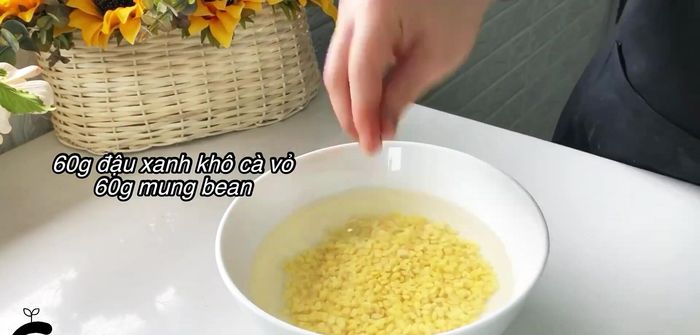Nestled amidst the breathtaking rice terraces of Sapa, Vietnam, lies a culinary gem: the Sapa sticky rice cake. Unlike its sweeter counterparts found elsewhere, this unique treat boasts a subtly sweet, predominantly chewy texture, perfectly capturing the essence of the mountainous region. Made with simple, locally-sourced ingredients, this cake offers a delightful contrast to the rich flavors often associated with Vietnamese cuisine. Its understated sweetness makes it a perfect accompaniment to strong coffee or tea, a welcome snack after a long day exploring the stunning landscapes. The earthy aroma of glutinous rice, subtly enhanced by the gentle warmth of the steam, is a sensory experience in itself.
This recipe unlocks the secrets to crafting authentic Sapa sticky rice cakes at home. By following the step-by-step guide, you'll learn how to achieve the perfect balance of chewiness and subtle sweetness, replicating the delightful texture and taste that define this unique Vietnamese delicacy. Prepare to embark on a culinary journey, bringing a taste of the Sapa mountains to your kitchen.
Tools Needed
- Steamer
- Blender
- Bowl
- Whisk
- 20cm diameter round mold
- Chopsticks
- Knife
Ingredients
- Dry green beans
- Pandan leaves
- Salt
- Water
- Dry rice
- Sugar: 5g
- Steamed mung beans: 40g
- Green shell powder
- Cooking oil: 10g + for greasing
- Fresh shredded coconut
- Flour mixture: 1 ph ha
Step-by-Step Instructions
Step 1. Prepare the Ingredients and Rice Mixture
- Wash and soak dry green beans in water for about two hours until softened. Steam until cooked (20-25 minutes). Let cool.
- Chop pandan leaves and blend with a little salt to extract juice. If using fresh leaves, soak in hot water for 10 minutes before blending.
- Roughly blend pandan leaves with water; do not over-blend. Filter the juice (approx. 200g).
- Add 15ml of pandan juice to dry rice, mix well, cover, and let sit for 20 minutes until rice is half-soft. Add 5g sugar, mix, and let sit for another 10 minutes.




- Mix the sugar-marinated rice with 40g of steamed mung beans.
- Mix in green shell powder. Prepare the crust dough, mix well, and let rest for 15 minutes.


Step 2. Assemble and Steam the Cake
- Grease the 20cm mold with cooking oil. Heat the mold in boiling water for at least 5 minutes.
- Add 10g of cooking oil to the dough, mix well. Spread half of the green bean rice mixture in the hot mold.
- Add fresh shredded coconut, then pour half of the flour mixture over the rice. Cover and steam for 10 minutes.
- Stir the remaining dough, spread remaining rice and coconut on the filling. Cover and steam for another 15 minutes.




- Add the rest of the dough mixture, cover, and steam for another 10 minutes until the top crust is clear.

Step 3. Cool and Serve
- Let the cake cool completely at room temperature for at least 5 hours before cutting.
- Use a knife coated with cooking oil or food wrap to cut the cake.


Read more: Vietnamese Sponge Wedding Cake: A Step-by-Step Guide
Tips
- Using pandan leaves that have withered for two days prevents bitterness. Fresh leaves should be soaked in hot water.
- Don't over-grind the pandan juice; it will be less clear.
- Cooking oil makes the dough shiny and soft.
- Stir the dough thoroughly before scooping and molding to prevent settling.
- Use your hand under the mold to remove the cake carefully, as it's delicate.
- Wrap the cake tightly with plastic wrap for better preservation.
Nutrition
- Calories: varies
- Fat: variesg
- Carbs: variesg
- Protein: variesg
FAQs
1. Can I use regular rice instead of glutinous rice for this recipe?
No, glutinous rice (also known as sweet rice) is essential for the cake's characteristic chewy texture. Regular rice won't provide the same results.
2. How do I store leftover Sapa sticky rice cakes?
Store leftover cakes in an airtight container at room temperature for up to 2 days, or in the refrigerator for up to a week. They can also be frozen for longer storage.
Making Sapa sticky rice cakes is a rewarding experience, bringing the authentic flavors of Vietnam into your kitchen. With its simple ingredients and straightforward method, this recipe is accessible to all skill levels, promising a delicious and satisfying outcome. Enjoy the delightful chewiness and subtle sweetness of this unique treat, a perfect taste of the Sapa mountains.
